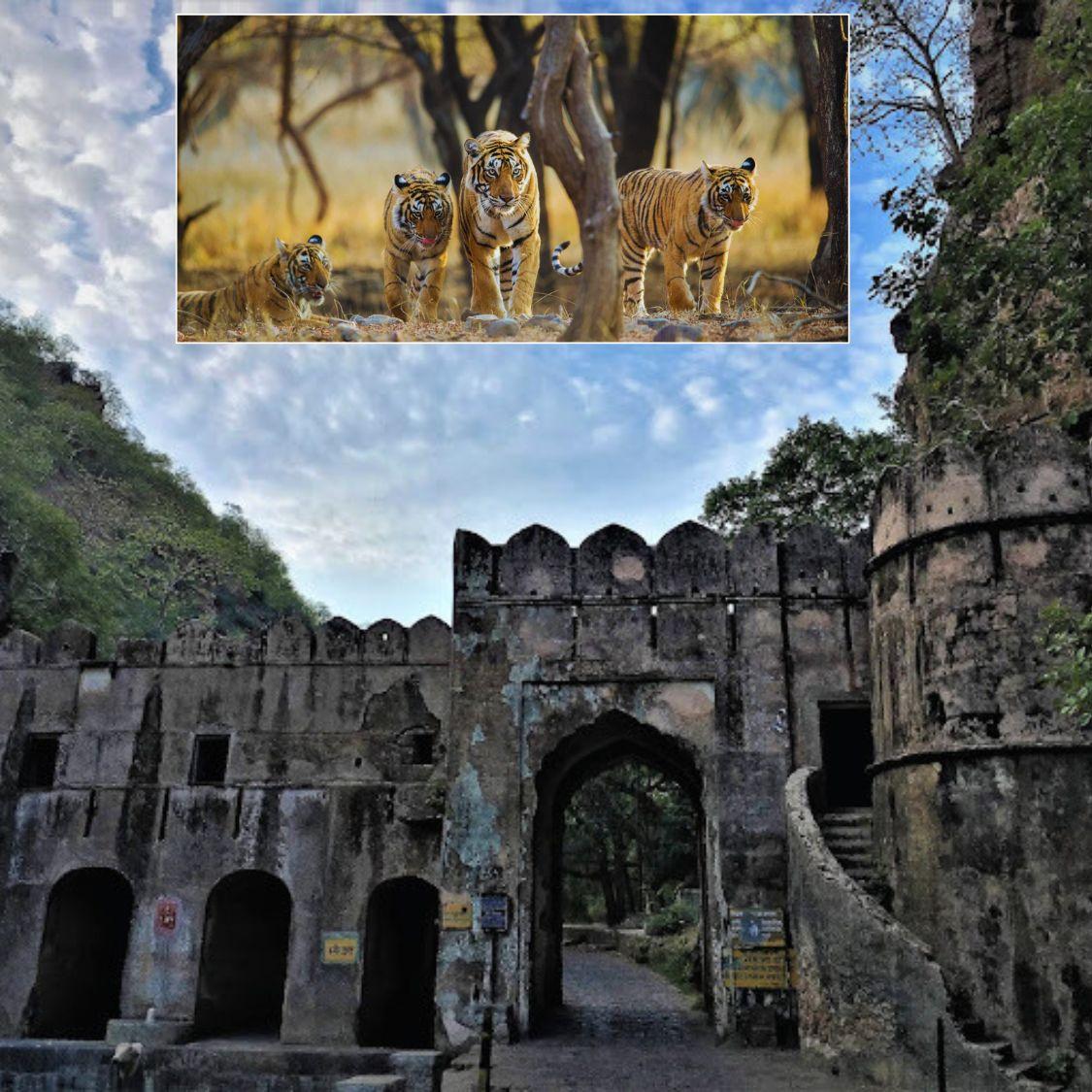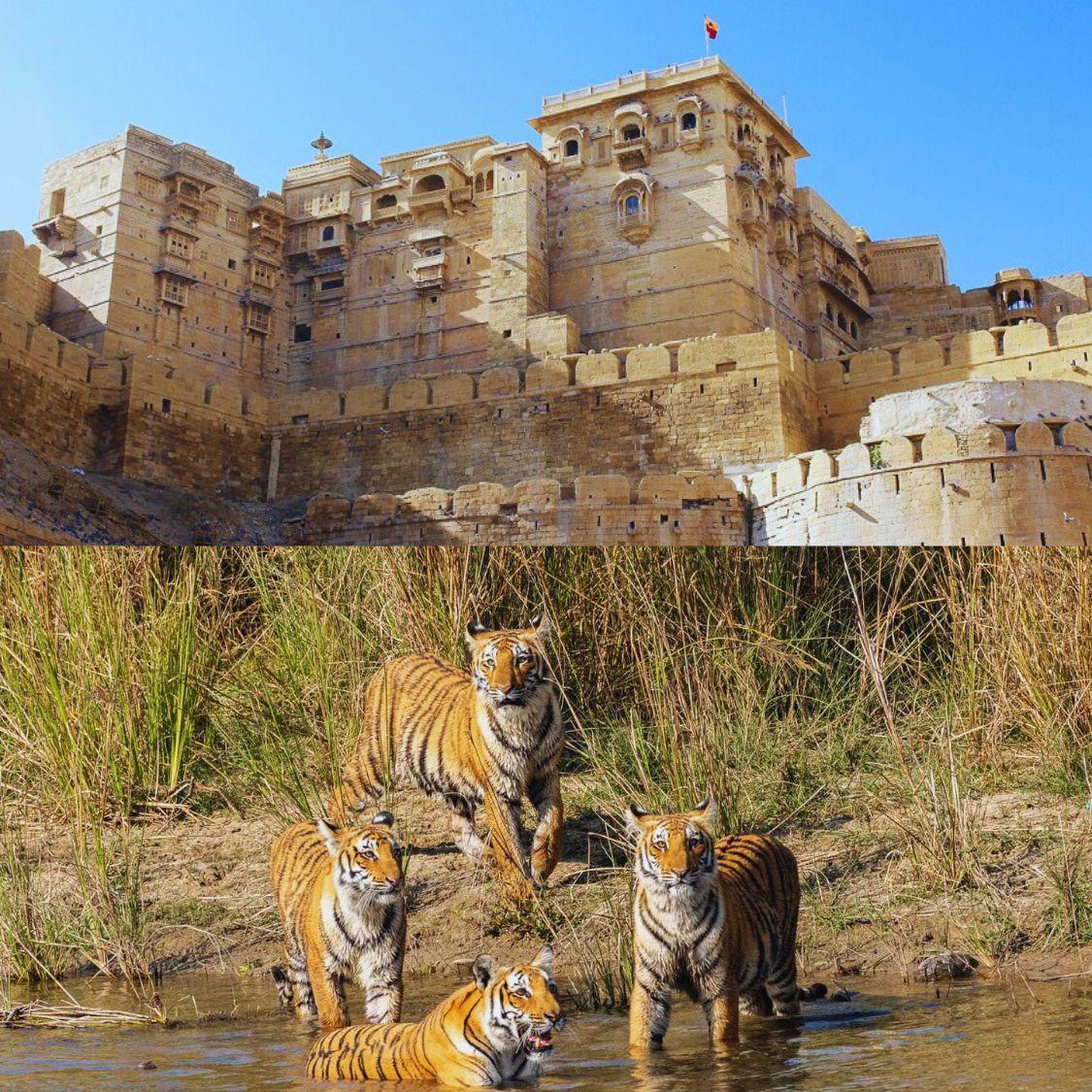Hidden in the southeast corner of Rajasthan, Mukundara Tiger Reserve is a lesser-known treasure that provides an unusual yet exciting wildlife encounter. This is not simply a forest; it’s a vast canvas of craggy hills, dry deciduous trees, and running rivers that together form an excellent home for elusive big cats and a great variety of flora and animals. Mukundara guarantees natural beauty, adventure, and quiet connection with the wild whether you are a nature lover, a wildlife photographer, or someone looking for a peaceful escape from the normal tourist destinations.
Let’s investigate the specifics of this hidden natural treasure.
Main Points:
Entry Fees: Rs. 137
Safari fee – (Gypsy) per person Rs.615
Mukundra Tiger Reserve Timings – 10 am to 5 pm
Important Note – During the monsoon, from July to September, Mukundra Tiger Reserve remains closed.
Road and rail linkages are good for the reserve; Kota is the closest significant train station. You may take a bus or hire a cab from Kota to get to the sanctuary gate.

What You May See
Mukundara might not yet have the tiger density of Ranthambore, but its environment maintains enough mystique to keep wildlife fans fascinated. One of Rajasthan’s four tiger reserves, the reserve is renowned for its attempts to restore tigers in the area. Here is what you could see on your safari:
- The tigers (Though uncommon, sightings are not implausible)
- Elusive and shy, leopards (wander the rocky landscape)
- Sloth Bears (Often spotted in the early mornings or evenings)
- Indian Wolves (Among the rare sites in Rajasthan to see them)
- Chinkara & Nilgai (Graceful antelopes usually spotted grazing)
- Marsh Crocodiles (Especially around the Chambal and Kali Sindh rivers)
- More than 180 bird species—including vultures, eagles, and partridges.
Ranging from dry deciduous forests to scrublands, the flora offers a rich environment for both prey and predator.
Highlights of Experience
Its feeling of isolation really distinguishes Mukundara Tiger Reserve from others. Unlike the more commercialised parks, this one lets you immerse in the quiet of the jungle—interrupted only by the sounds of peacocks or the rustle of dry leaves under a passing herd.
Spanning the former Darrah Wildlife Sanctuary, Chambal River, and portions of Jawahar Sagar and Kota Barrage, the reserve is a biological hotspot. Riverine corridors and thick highland forests provide it a wild appeal, ideal for photographers and environmentalists.
The excitement of maybe being among the first few to see a tiger in this growing reserve is a sensation unlike any other.

Nearby Places to Explore
Your visit to Mukundara could quickly become a memorable history and wildlife circuit:
- Garadia Mahadev Temple – Just 30 km from the reserve, it offers a stunning canyon view of the Chambal River.
- Kota Barrage – A popular picnic spot with a beautiful water body.
- Seven Wonders Park (Kota) – A quirky photo stop featuring mini replicas of world wonders.
- Chambal Garden – Peaceful place for a stroll and boat ride.
Every location—whether spiritual, beautiful, or historical—adds a unique flavour to your trip.
Goya Hills can help you to extend your wild getaway in Udaipur
Should your spirit still yearn for more nature and animals after Mukundara, travel west to Udaipur. Set in the Aravalli hills, Udaipur is not only about palaces and lakes; it’s also a starting point for discovering Sajjangarh Biological Park, where conservation and wildlife coexist in a lovely woodland environment. Check out Goya Hills—a private villa in Udaipur combining comfort and personalised experiences for an immersive and opulent stay among nature. Goya Hills is the ideal extension of your wildlife trip in Rajasthan whether you prefer bird watching from your private terrace, hiking nature paths, or just relaxing with forest views.To book your stay with us, call us on +91 9024082177.
Reasons Mukundara Should Be on Your Wildlife Bucket List
Mukundara Tiger Reserve is a place waiting to be discovered if you’re searching for the greatest wildlife in Rajasthan outside the throngs. Its beautiful scenery, natural wildness, and rising conservation success offer a different sort of safari—one that is quiet, inquisitive, and near to nature.
Pack your binoculars, fill your camera, and go to Mukundara, where the bush still holds secrets and every path has a narrative to tell.



